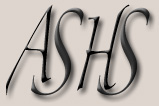LEDs in horticulture
Robert Morrow - Orbital Technologies
Corp.
email: morrowr@orbitec.com
Solid-state lighting based on the use of
light emitting diodes (LEDs) is potentially one of the biggest
advancements in horticultural lighting in decades. LEDs can play a
variety of roles in horticultural lighting, including use in
controlled environment research, providing tissue culture
lighting, and supplemental and photoperiod lighting for
greenhouses. LED lighting systems have several unique advantages
over existing horticultural lighting, including the ability to
control spectral composition, the ability to produce very high
light levels with low radiant heat output, and the ability to
maintain useful light output for years without replacement. LEDs
are the first light source to have the capability of true spectral
composition control, allowing wavelengths to be matched to plant
photoreceptors to optimize production and to influence plant
morphology and composition. Because they are solid state devices,
LEDs are easily integrated into digital control systems,
facilitating complex lighting programs like varying spectral
composition over the course of a photoperiod or with plant
development stage. LEDs are safer to operate than current lamps
since they do not have glass envelopes or high touch temperatures,
and they do not contain mercury. The first sustained work with
LEDs as a source of plant lighting occurred in the mid-1980s to
meet the need for a new lighting system for plant growth systems
being designed for the space shuttle and space station. These
systems progressed from simple red only LED arrays using the
limited components available at the time to high density,
multi-color LED chip on board technologies. The performance of
LEDs has continued to improve steadily over the last several years
and LED systems are now poised to become economically feasible in
large scale horticultural lighting applications.
HortScience, Vol. 42(4), July 2007.
 AMERICAN SOCIETY FOR HORTICULTURAL SCIENCE
AMERICAN SOCIETY FOR HORTICULTURAL SCIENCE